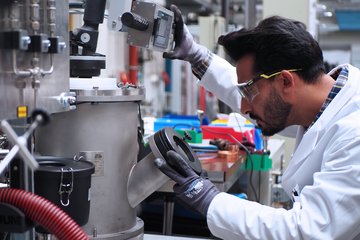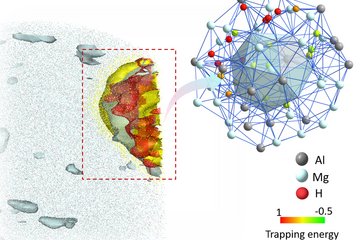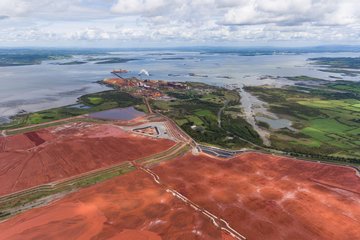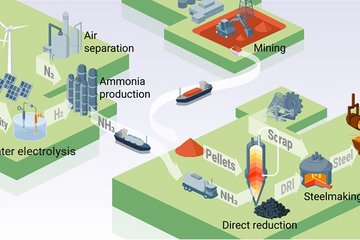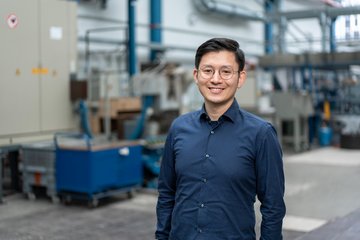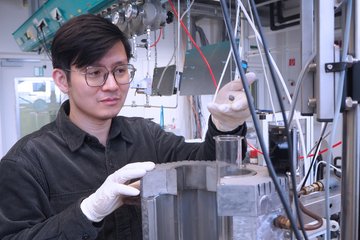Alle Typen
2161.
Poster
Graded, ultrafine-grained, ferrite/martensite dual phase steel: a case study for damage-resistant microstructure design. Physics based materials models and experimental observations, Cesme Turkey (2014)
2162.
Poster
Stress and Strain Partitioning in Multiphase Alloys: An Integrated Experimental-Numerical Analysis. Materials to Innovate Industry and Society, Noordwijkerhout, The Netherlands (2013)
2163.
Poster
Atom probe study of Cu2ZnSnSe4 thin-films for photovoltaic applications. European APT Workshop 2013, Zurich, Switzerland (2013)
2164.
Poster
Synthetische Fluorapatit/Polymer-Dentalkomposite, basierend auf dem Vorbild Haizahn-Enameloid. Jahrestagung der Deutschen Gesellschaft für Biomaterialien, Erlangen, Germany (2013)
2165.
Poster
Atom Probe Tomography Investigation of the K-state and Short-Range Ordering in Fe–18Al (at.%). EUROMAT 2013, Sevilla, Spain (2013)
2166.
Poster
Systematic and efficient investigation of the influences on the dislocation structures formed during low cycle fatigue in austenitic stainless steel. Euromat 2013, Sevilla, Spain (2013)
2167.
Poster
Design of ductile Mg alloys by combining ab initio and experimental methods. Euromat 2013, Sevilla, Spain (2013)
2168.
Poster
Novel methodology for high resolution strain mapping to high deformation levels. Euromat 2013, Sevilla, Spain (2013)
2169.
Poster
Atomistic and inverse-analytical modeling of elastic properties of coherent nano-phases. GDRi CNRS MECANO General Meeting on the Mechanics of Nano-Objects, MPIE, Düsseldorf, Germany (2013)
2170.
Poster
In-situ observation of dislocation evolutions in single crystal Ni base superalloys creep using discrete dislocation dynamics simulation. GDRi CNRS MECANO General Meeting on the Mechanics of Nano-Objects, MPIE, Düsseldorf, Germany (2013)
2171.
Poster
Size effects on mechanical stability of metastable austenite. GDRi CNRS MECANO General Meeting on the Mechanics of Nano-Objects, MPIE, Düsseldorf, Germany (2013)
2172.
Poster
Discrete dislocation pattern observation around nanoindents using cECCI. GDRI CNRS Mecano General Meeting, MPI für Eisenforschung GmbH, Düsseldorf, Germany (2013)
2173.
Poster
Micro-testing of isolated single/bi-crystals of complex alloys with ECCI & δ-EBSD imaging. 4th International Workshop on Remote Electron Microscopy and In Situ Studies, Lisbon, Portugal (2013)
2174.
Poster
Characterization of Cu(In,Ga)Se2 grain boundaries using atom probe tomography. 2013 MRS Spring Meeting & Exhibit, San Francisco, CA, USA (2013)
2175.
Poster
Dislocation dynamics simulation of Ni base superalloy creep under different loading conditions. 2013 MRS Spring Meeting, San Francisco, CA, USA (2013)
2176.
Poster
3D-reconstruction of Geometrically Necessary Dislocation densities. RexGG 2013, Sydney, Australia (2013)
2177.
Poster
Towards Comprehensive Crystalographic and Property Characterization of Grain Boundaries. Fachbeiratsitzung 2013, MPIE, Düsseldorf, Germany (2013)
2178.
Poster
Stress and Strain Partitioning in Dual Phase Steels: Statistical Analysis of Numerical Results. Materials to Innovate Industry and Society, Noordwijkerhout, The Netherlands (2012)
2179.
Poster
Heterogeneous Crystal Plasticity Simulations Using Pseudo-Spectral Methods. Materials to Innovate Industry and Society, Noordwijkerhout, The Netherlands (2012)
2180.
Poster
Carbon diffusion path around edge dislocation in bcc iron. 10th Materials Day, Bochum, Germany (2012)
